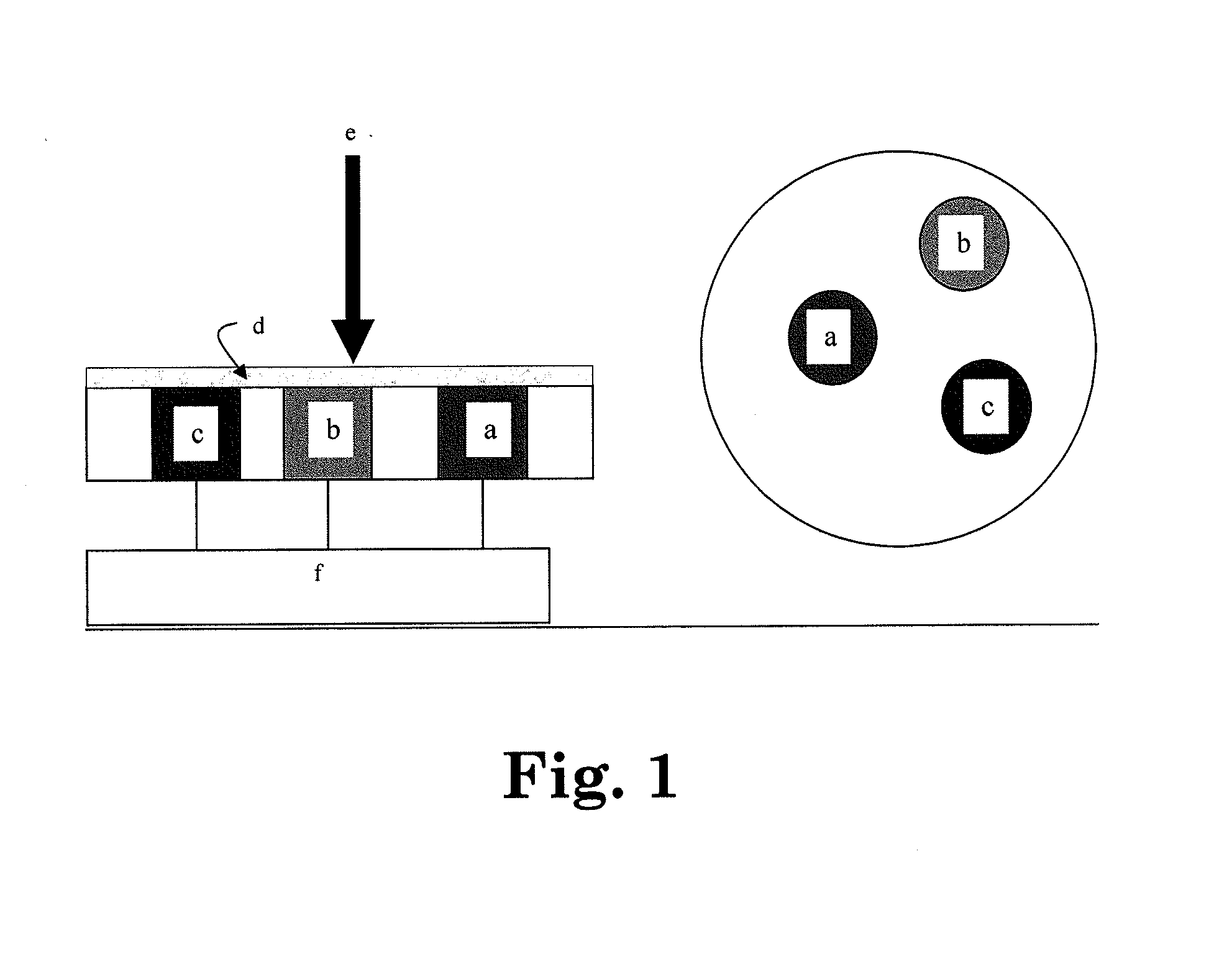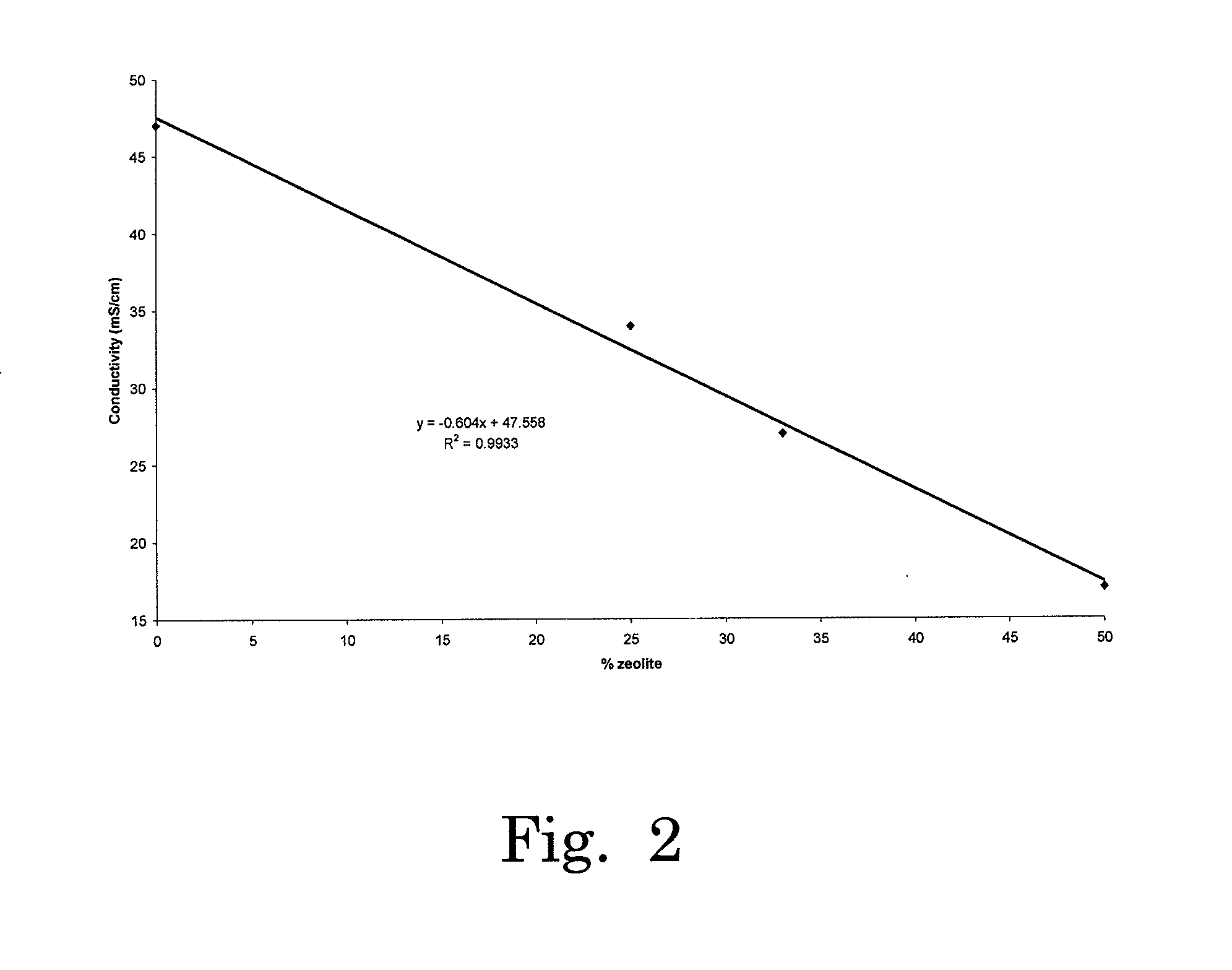Manufacturing carbon-based combustibles by electrochemical decomposition of co2
a technology of electrochemical decomposition and carbon dioxide, which is applied in the production of electrolytic organic products, multiple component coatings, and electrochemical coatings. it can solve the problems of high current densities, high cost, and high cost of co2 reduction
- Summary
- Abstract
- Description
- Claims
- Application Information
AI Technical Summary
Benefits of technology
Problems solved by technology
Method used
Image
Examples
Embodiment Construction
[0024]It has now been found that an electrochemical cell such as described in FIG. 1 containing a gel electrolyte comprised of a zeolite mixed with an ionic liquid provides surprisingly efficient means for reducing CO2 and obtaining a variety of carbon-based combustibles, particularly when the cell comprises an amine such as EDA.
[0025]In one arrangement, the electrochemical reduction of CO2 leads to massive conversion of CO2 to fuels such as CO and H2 at the cathode, and to O2 at the anode. The cell is schematically described in FIG. 10. All experiments were carried out at ambient temperature (around 25° C.).
[0026]The electrolyte employed is an ionic liquid used in its solidified form by entrapping in a gel or membrane. One of ionic liquids suitable for the present invention is butylmethylimidazolium tetrafluoroborate (abbreviated BmimBF4, Fluka 91508) whose structure is shown below:
[0027]However, other ionic liquids, such as ones with other organic cations and inorganic or organic ...
PUM
 Login to View More
Login to View More Abstract
Description
Claims
Application Information
 Login to View More
Login to View More - R&D
- Intellectual Property
- Life Sciences
- Materials
- Tech Scout
- Unparalleled Data Quality
- Higher Quality Content
- 60% Fewer Hallucinations
Browse by: Latest US Patents, China's latest patents, Technical Efficacy Thesaurus, Application Domain, Technology Topic, Popular Technical Reports.
© 2025 PatSnap. All rights reserved.Legal|Privacy policy|Modern Slavery Act Transparency Statement|Sitemap|About US| Contact US: help@patsnap.com



